When the distance you run in the mountains adds up to more than a hundred kilometres, certain equipment and gear become vital. In this article, we're going to explain what you need.

Mountain Ultra Trail
Required Gear, Essential Gear
If we want to take part in an Ultra Trail, something that most mountain runners aspire to at least once in their lives, we must know that we will have to carry all the equipment that the organisation specifies in order to be able to start.
This material is for our safety. And the fact that it is compulsory does not mean that it is the only thing we should carry. Everyone needs to know what they need to safely face such an event, and although we should not carry less, we can carry more.
This is in the case of an organised event. If we want to go on such an outing on our own, we must put our own safety first, and not remove any of the essentials in order to save weight.
Lightweight vs. Efficient in an Ultra
When it comes to tackling an ultra-distance mountain race, often exceeding one hundred kilometres, you might think that the lighter you go, the less tired you will be.
It seems logical, but it is not always the case. Especially in those races with technical high mountain areas, such as the Gran Trail del Aneto.
Let's take the case of crampons for trail running shoes. They weigh just under 500 grams, a weight that some people may consider important to carry. That saps energy. But the fact is that, if you don't wear them - the organisation of the Gran Trail del Aneto, after problems in some editions, tends to consider them obligatory equipment - there will be sections in which you will put yourself in danger, with added stress, and you will also spend considerably more energy to overcome them without crampons than you will use to carry them for the rest of the race.

Crampons for trail running in the Gran Trail del Aneto-Posets. Photo: Barrabes
This loss of efficiency not only translates into greater risk and energy expenditure -which in most cases exceeds what we have saved by not carrying this material: in the editions prior to the compulsory use of crampons, it was not uncommon for those who wore crampons to manage to overcome these sections in 1-2 hours fewer than those who did not.
Crampons are one example, but there are more: not wearing the right warm clothing can cause us to lose time and energy due to hypothermia, not carrying the necessary food can weaken us enormously, etc.
Therefore, before eliminating material to save weight in something as extreme as an ultra, we have to evaluate not only the risk we will run, but also whether it will really make us gain or lose energy.
Self-Sufficient vs. Assisted Races
It is very different to go out into the mountains on your own in total autonomy, or even a self-sufficiency event, than an ultra trail with assistance, refreshment posts and beacons.
However, this should not be taken for granted. That is why most of this material must be carried independently of these aids, and why most races, even if they are assisted, require it.
For this reason, because you never know when you might need it, and despite the organisation's means - you have to understand that a problem or pulling out in an accessible area is not the same as in a remote mountain area - we are not going to differentiate when recommending this material between self-sufficiency and assistance. We consider that it is always necessary: from the right footwear to the emergency blanket.
Essential Equipment for Ultra Mountain Trail Races
1. Footwear
There are various types of trail running shoes:
- 1. Cross y Vertical Race Shoes
- 2. Half Marathon Shoes
- 3. Marathon Shoes
- 4. Ultradistance Shoes
With regard to this classification, the following rule applies:
- The shorter the distance, the more reactive and technical: less protection, balance and cushioning.
- The longer the distance, the more protection, balance and cushioning: less reactive and technical.
And this is a perfect example of how by saving a few grams, we can sacrifice a lot.

Brooks Cascadia 15 GTX, excellent cushioning for ultra trails
If we choose cross country or half marathon shoes for an ultra, we can save weight and gain reactivity... but it is very likely that we won't even manage to finish the race.
That weight gain translates into the protection, cushioning and stability we need.
We often say that the choice of a trail running shoe is a one-way ladder. In this article Cross, Maratón, Ultra Trail. How to Choose the Right Trail Running Shoes for You we explain to you what we mean, as well as everything you need to know to find yours: last, weight, sole, types of race, etc.
2. Technical Trail Running Clothing
We need technical clothing for running, just like at any other activity: light, comfortable, seamless, etc.
But in the case of long mountain races, especially the more technical ones and those that pass through high altitude mountain ranges, it is mandatory to carry the necessary mountain clothing.

Cold atmosphere in the Gran Trail of the Aneto-Posets.
Because of the distance, we will be running at night and in very cold weather, and the possibility of sudden changes with rain, hail, wind, a big drop in temperatures and, in some cases, even snow, is always there.
For this reason, a waterproof windbreaker, long tights, sleeves or long-sleeved T-shirt, gloves and a Buff are indispensable. And not just because the organisers say so: our safety is at stake.
And as for the right clothes for running, we recommend that you consult our article What to Wear for Trail Running and Mountain Races. There you will find everything related to leggings, trousers, t-shirts...
3. Backpacks
Obviously, if we have to carry clothes and other equipment, we will have to take something to carry it in.
For ultra trail the option is the backpack; it is almost impossible to fit everything you need in something smaller. Some people manage to fit everything in a 5-litre backpack, but the best is a 10-litre backpack.

CAMP Trail Force 10
Sometimes you manage to fit your gear into 5 litres, basically leaving out important things. You should always do it the other way round: first the equipment you need, then a vest that can carry it.
Nowadays all trail running backpacks are, or tend to be, vests. Some are more radical, some are a bit oppressive, others less so, but they all fit around the body so that the weight is balanced and well distributed.
They all have bottle carriers, hydration systems, and everything you need to have the essentials at hand without having to stop.
To find out what types there are, what a backpack vest is, which ones to choose, and everything else, our article How to Choose your Trail Running Pack or Belt
4. Hydration Systems
Athletic efforts that can exceed twenty-four hours, remote areas with no possibility of quick escape and no access to water. All this and much more is what can be found in an ultra. Therefore, if proper hydration is always important in any sporting activity, in the case of an ultra trail it becomes essential.
Hydration in trail running has to be efficient: the systems must not hinder our movements and must be accessible, so that we don't have to stop to drink, and can do so while running or walking.

Integrated hydration systems in Salomon backpacks
One very important thing: water treatment. It may be advisable to treat the water we find. Nowadays this is quite easy to do with water purification bottles.
¿What are they like? If you want to know them, as well as the other hydration systems for mountain running - soft flasks, rigid flasks, flexible bottles, (all of them integrated in the packs, bum bags, vets, backpacks, etc.) -, and discover some interesting tips and tricks, we recommend you to read our article How to choose your hydration system for mountain running
5. Poles
Poles are essential for an ultra. Actually, they almost always are, but the difference between carrying them and not carrying them, after 50-60km, when we still have half a race to go, is enormous.
The problem with poles, until not so long ago, was that they were quite heavy and uncomfortable to carry. And in an ultra you are always going to find sections where you don't use them. But this is no longer a problem, for two reasons:
- Modern trail running backpacks and vests are perfectly equipped to carry them.
- The new trail running poles have are very lightweight and fold up on themselves to take up very little space.

Our colleague Fernando Tomás, in the Ultra Trail del Mont Blanc. Photo: Barrabes, F. Tomás
6. Headlamps
As it doesn't seem very possible to complete more than 100 kilometres in the mountains in daylight hours, and it is therefore unavoidable to walk at night, lighting becomes absolutely essential when tackling an ultra trail.
And, for obvious reasons, the only option is a headlamp, which will allow us to run hands-free and direct the light where we are looking.
Nowadays they are all LED's, and they only have advantages: natural colour light, no "image", low consumption which means a long durability that allows use for many hours, the same intensity from beginning to end, no light drop at the end, very limited weight, low volume, automatic graduation of the light beam depending on whether it is directed at a close or distant object, etc.

The Gran Trail Aneto-Posets starts in the streets of Benasque. The start is at midnight
The battery life of the rechargeable battery is long, but it is also usually removable and small, so we can carry spares with practically no weight or space occupation.
Small, lightweight headlamps are available, but we must ensure that the light output is at least 200 lumens or more; running requires range, and with an underpowered headlamp we will run into obstacles and not be able to see our distant path, resulting in a problem with orientation.
7. Nutrition
If hydration is basic and fundamental in an ultra trail, what can we say about nutrition?
It is true that most of the work in this area is done before the race. But during the event, once we are going to spend more than 24 hours non-stop in activity, we have to replenish our strength and prevent our body from losing its homeostatic balance.
It is normal that, at the refreshment points, or at longer stops, we eat something solid and "normal". However, during the race, gels and bars will be our companions.
It is necessary to choose those that are natural and specifically studied. They provide exactly what the body needs, without " residuals", their composition only incorporates what we need, nothing more, and the intake is very fast, which is fundamental a fatigue attack.
There are several types, and each one is specifically designed for a specific situation, based on what type of nutrients they provide and how quickly those are released.
Other Essential Safety Equipment for Ultra Races
1. Anti-chafing Creams
It can make our life much easier whenever we run, but in an ultra trail it is as obligatory material as the shoes. If we don't protect our sensitive areas, after more than a day of continuous rubbing they will be very sensitive.

Care Plus Camphor Spray
2. Sunglasses for Running in the Mountains
In the mountains, solar radiation, snow and wind can do a lot of damage to our eyes. With different types of protection, mountain sunglasses are essential for our excursions.
3. Thermal Blanket, Whistle, Charged Mobile Phone, and a GPS Tracker
We should always carry these items in a remote area, we never know what might happen.
The thermal blanket will protect us (on the one hand from the cold, on the other from the heat) and the mobile phone will allow us to communicate in case of emergency.

Salewa Rescue Blanket
If we go alone, and since we will not always have coverage, we can consider the use of satellite trackers.

Spot Gen-3, satellite tracker
A whistle is mandatory. But before you buy one, there's one thing you should know: almost all backpacks have a whistle built into the chest strap attachment. It's not really an add-on: it's usually designed so that when you blow into it, it acts as a whistle.
The sonic volume of this whistle is for close proximity. If we foresee entering foggy areas, or in any situation where we may need to be heard at a long distance, we recommend a larger, traditional whistle -they weigh less than ten grams-... but not with an internal ball system. You have to carry it hanging from the shoulder strap of your rucksack, and we can tell you from experience that the noise of the ball bouncing and banging when running, in a long event, ends up getting on your nerves.
4. Mountaineering Watches
Mountain watches, in addition to the usual running controls, have specific functions such as barometer, compass, GPS, altimeter, which can be crucial in our routes, regardless of whether the route is marked.




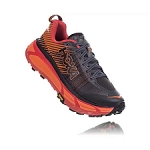
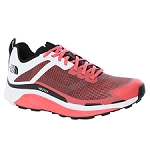

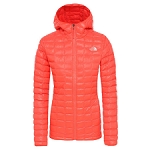


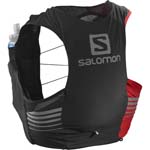

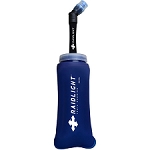

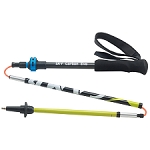


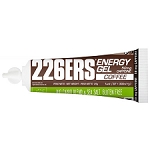




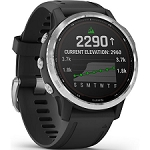




Leave a comment
Be the first to comment on this article.